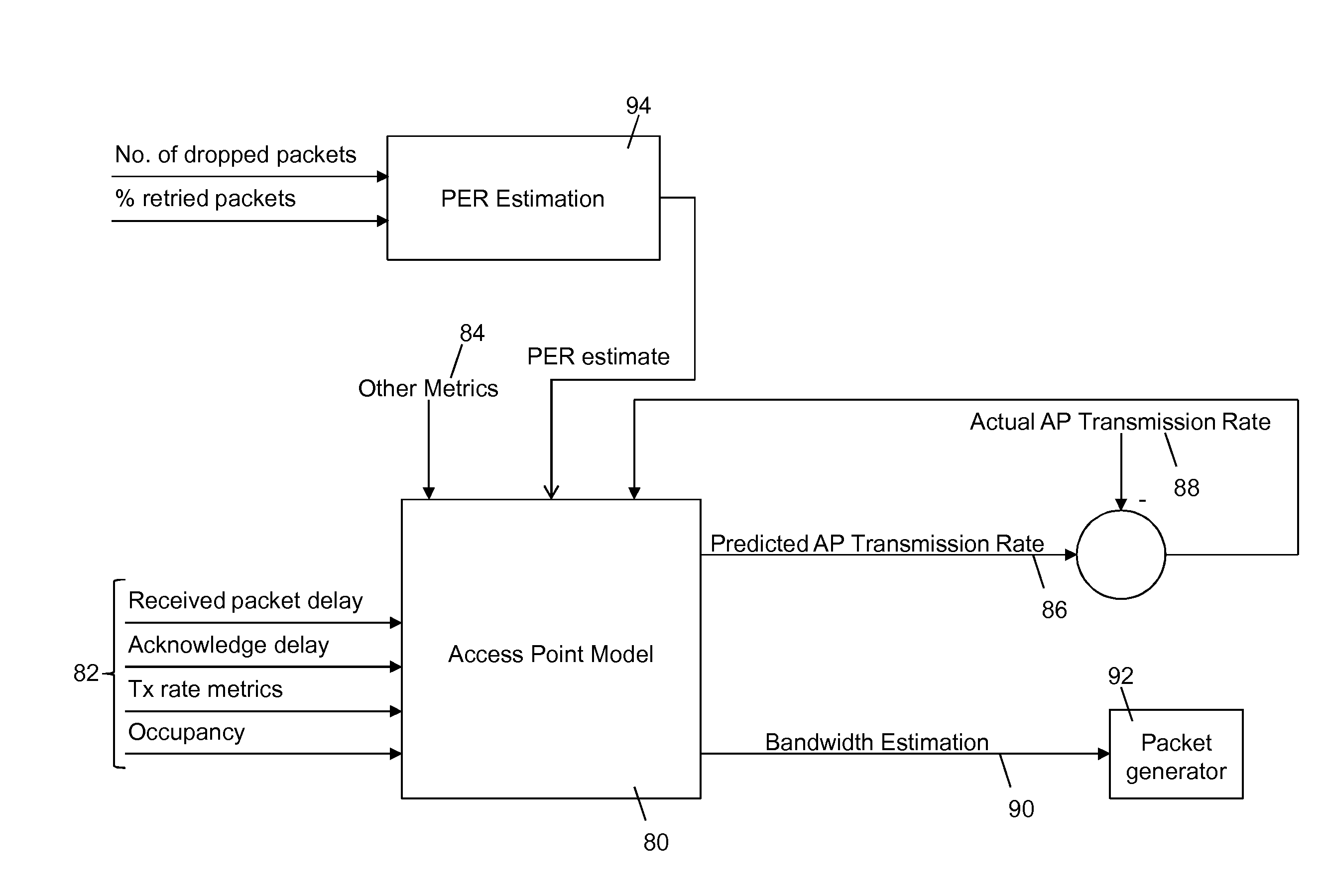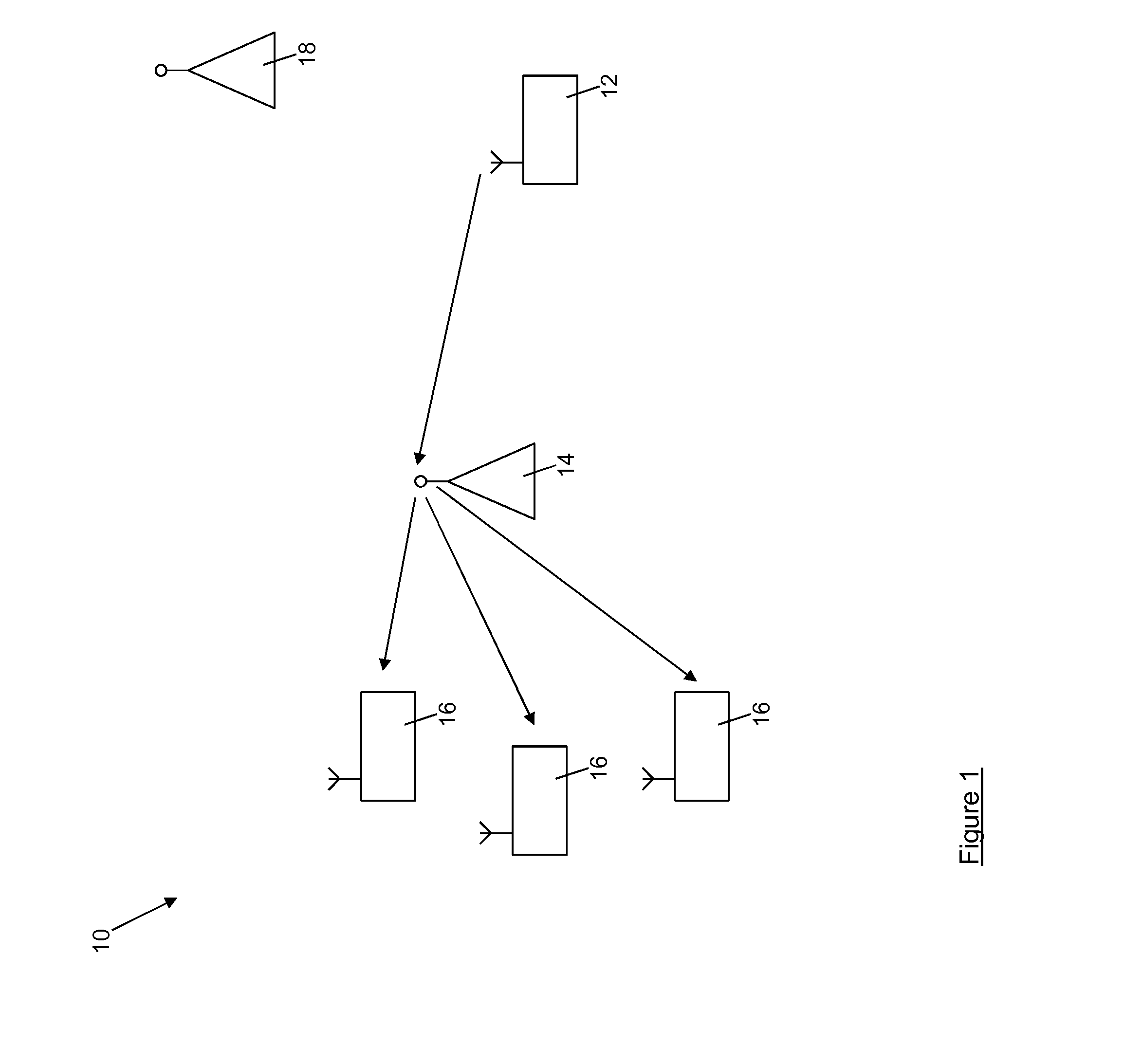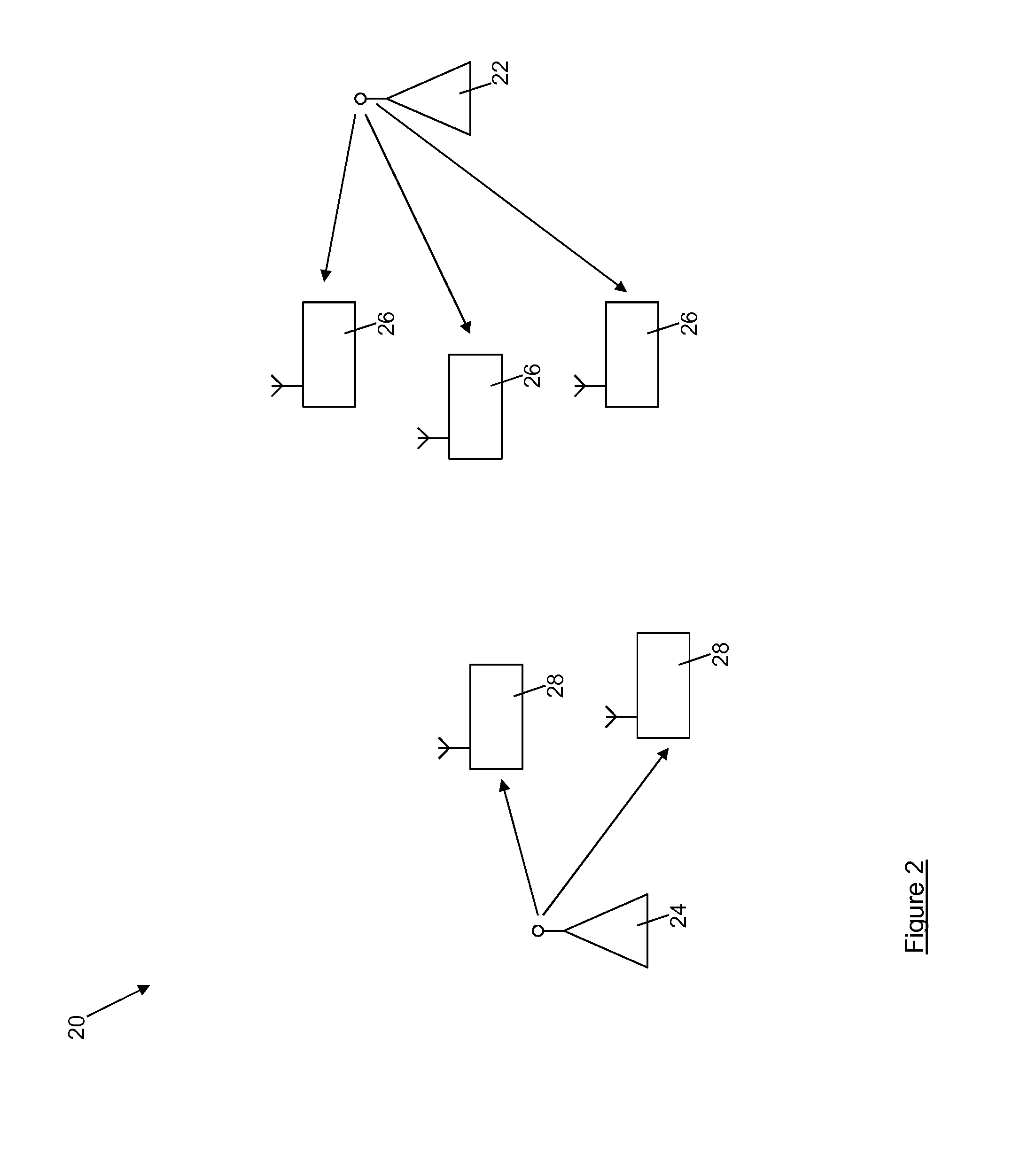Data rate adaptation in a wireless transmitter
a wireless transmitter and data rate technology, applied in the direction of link quality based transmission modification, network traffic/resource management, transmission, etc., can solve the problems of network degradation, data loss, data rate use, etc., and achieve the effect of reducing the data rate and reducing the packet size of the data pack
- Summary
- Abstract
- Description
- Claims
- Application Information
AI Technical Summary
Benefits of technology
Problems solved by technology
Method used
Image
Examples
Embodiment Construction
[0058]Referring first to FIG. 1, an exemplary wireless network environment, which may be, for example, a WiFi® network, is shown generally at 10. In this environment a source node 12 generates data packets such Real-time Transport Protocol (RTP) packets containing video or audio content to be streamed wirelessly, via a wireless access point 14, to a plurality of receiving devices 16. On receiving the streamed content the receiving devices 16 respond to the source node 12 with secondary information such as Acknowledge messages and Receiver's Reports. The network environment may contain more than one source node (e.g. a second source node 18 may be present) streaming media to multiple receiving devices. Thus, in the wireless network environment 10 there may be multiple source nodes each transmitting a large amount of data onto the network.
[0059]An alternative wireless network environment, which again may be a WiFi® network, for example, is shown schematically at 20 in FIG. 2. In this ...
PUM
 Login to View More
Login to View More Abstract
Description
Claims
Application Information
 Login to View More
Login to View More - R&D
- Intellectual Property
- Life Sciences
- Materials
- Tech Scout
- Unparalleled Data Quality
- Higher Quality Content
- 60% Fewer Hallucinations
Browse by: Latest US Patents, China's latest patents, Technical Efficacy Thesaurus, Application Domain, Technology Topic, Popular Technical Reports.
© 2025 PatSnap. All rights reserved.Legal|Privacy policy|Modern Slavery Act Transparency Statement|Sitemap|About US| Contact US: help@patsnap.com



